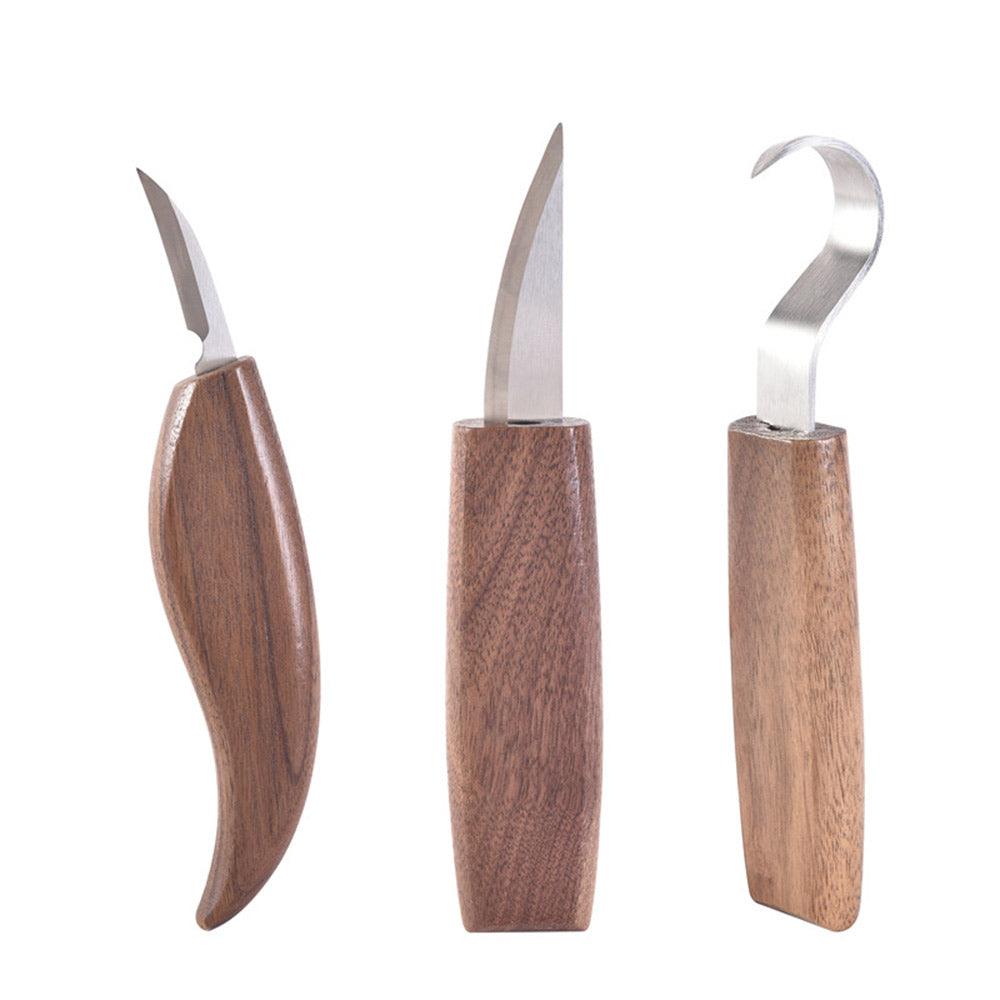WOOD CARVING
What is a good tool for wood carving
When it comes to wood carving, having the right tools can greatly enhance your carving experience and the quality of your work. There are numerous tools available for wood carving, each designed for specific tasks and techniques. Here are some commonly used tools that are considered good options for wood carving:
1. Carving Knives : Carving knives are versatile and essential tools for wood carving. They typically feature a sharp, narrow blade with a pointed or rounded tip. Carving knives are used for shaping, detailing, and creating intricate designs in wood. They come in various sizes and blade profiles, allowing for different carving techniques and applications.

2. Gouges: Gouges are curved chisels with a U-shaped cutting edge. They are available in different sweeps, which refer to the curvature of the blade. Gouges are excellent for hollowing out or shaping concave surfaces, creating contours, and making decorative elements such as flutes or coves. They are indispensable tools for relief carving and sculptural work.
3. Chisels: Chisels are tools with a straight cutting edge, typically used for removing larger amounts of wood or creating straight, clean lines. They come in various widths and can be used for roughing out the basic shape of a carving, making straight cuts, or creating flat surfaces. Beveled-edge chisels are commonly used in wood carving, allowing for precise cutting and control.
4. V-Tools: V-tools, also known as veining or parting tools, have a V-shaped cutting edge. They are used for creating fine lines, outlining details, and making deep or shallow incisions in wood. V-tools are particularly useful for lettering, decorative borders, and adding texture to a carving.
5. Mallets: Mallets are wooden or rubber-headed hammers used in conjunction with chisels, gouges, and other carving tools. They provide impact and control when driving the tools into the wood. Mallets come in different weights and sizes, and the choice depends on the type of carving and wood density. For delicate work, a lightweight carving mallet is preferable, while heavier mallets are suitable for larger-scale projects.
6. Power Carving Tools: Power carving tools, such as rotary tools or power carving machines, can be valuable additions to a woodcarver's toolkit. These tools use high-speed rotating bits or blades to remove wood quickly and efficiently. They are particularly useful for removing material in bulk, shaping contours, and creating intricate details. However, power carving tools require proper safety precautions and technique due to their high speed and power.
7. Detailing Tools: In addition to the aforementioned tools, several smaller tools are specifically designed for fine detailing and intricate work. These may include chip carving knives, skew chisels, fishtail gouges, spoon gouges, and various specialized carving tools. These tools offer greater precision and control for delicate carving work.
It's important to choose high-quality tools made from durable materials, such as high-carbon steel or high-speed steel, to ensure sharpness and longevity. Additionally, maintaining and sharpening your carving tools regularly is crucial for optimal performance.
Ultimately, the selection of wood carving tools depends on your carving style, preferences, and the specific project at hand. It's recommended to start with a few essential tools and gradually expand your collection as you gain experience and explore different carving techniques.
